Master the Art of Homemade Stone Ground Mustard: Grinding Mustard Seeds
This is an exciting guide on making your own stone ground mustard. We are going to break down the process, making it easy and fun. Discover the simple joy of transforming basic ingredients into a gourmet creation, perfect for impressing at your next gathering. Get ready to add a personal touch to your meals and revel in the sweet satisfaction of saying, “I made this!”
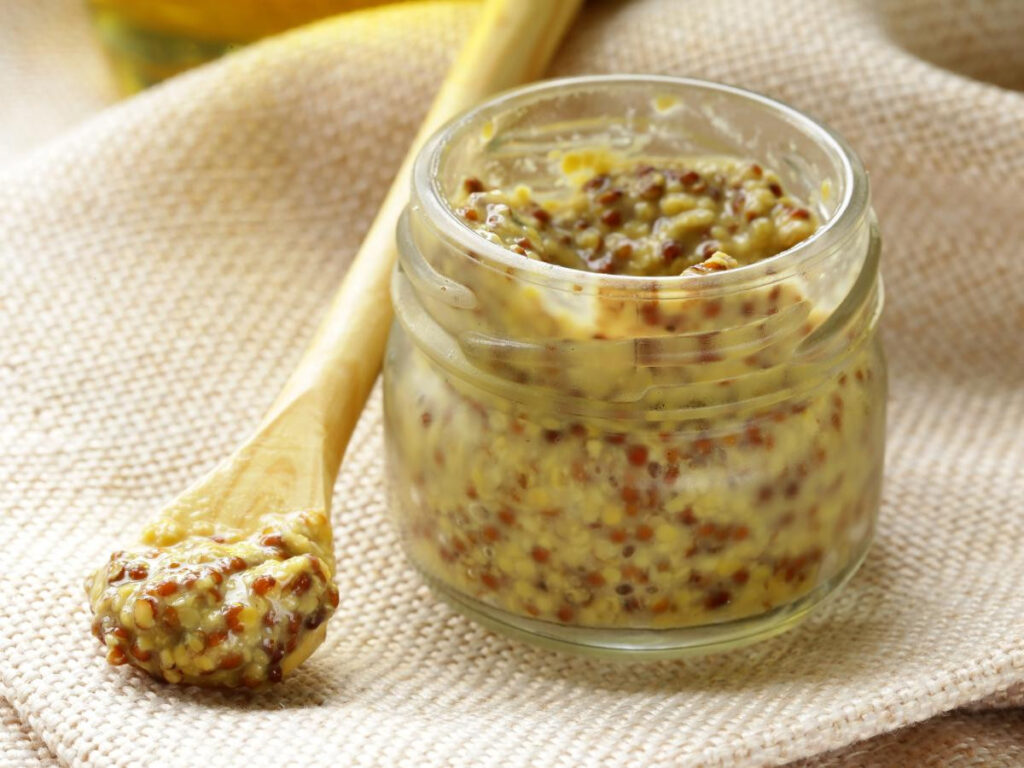
Grinding the Days Away
I’m thrilled to share a slice of my kitchen life with you, especially a part that resonates deeply with my heart and palate – making stone ground mustard.
As an executive chef, I’ve always been passionate about creating flavors from scratch, and mustard, this seemingly humble condiment, holds a special place in my repertoire of recipes.
The beauty of stone ground mustard isn’t just in its robust flavor and rustic texture; it’s in the simplicity and joy of making it at home. Surprisingly easy yet remarkably rewarding, the process of crafting your dry mustard is something every food enthusiast should experience.
It’s almost magical how a handful of basic ingredients – whole mustard seeds, vinegar, and a pinch of salt – transform into a condiment cherished for centuries.
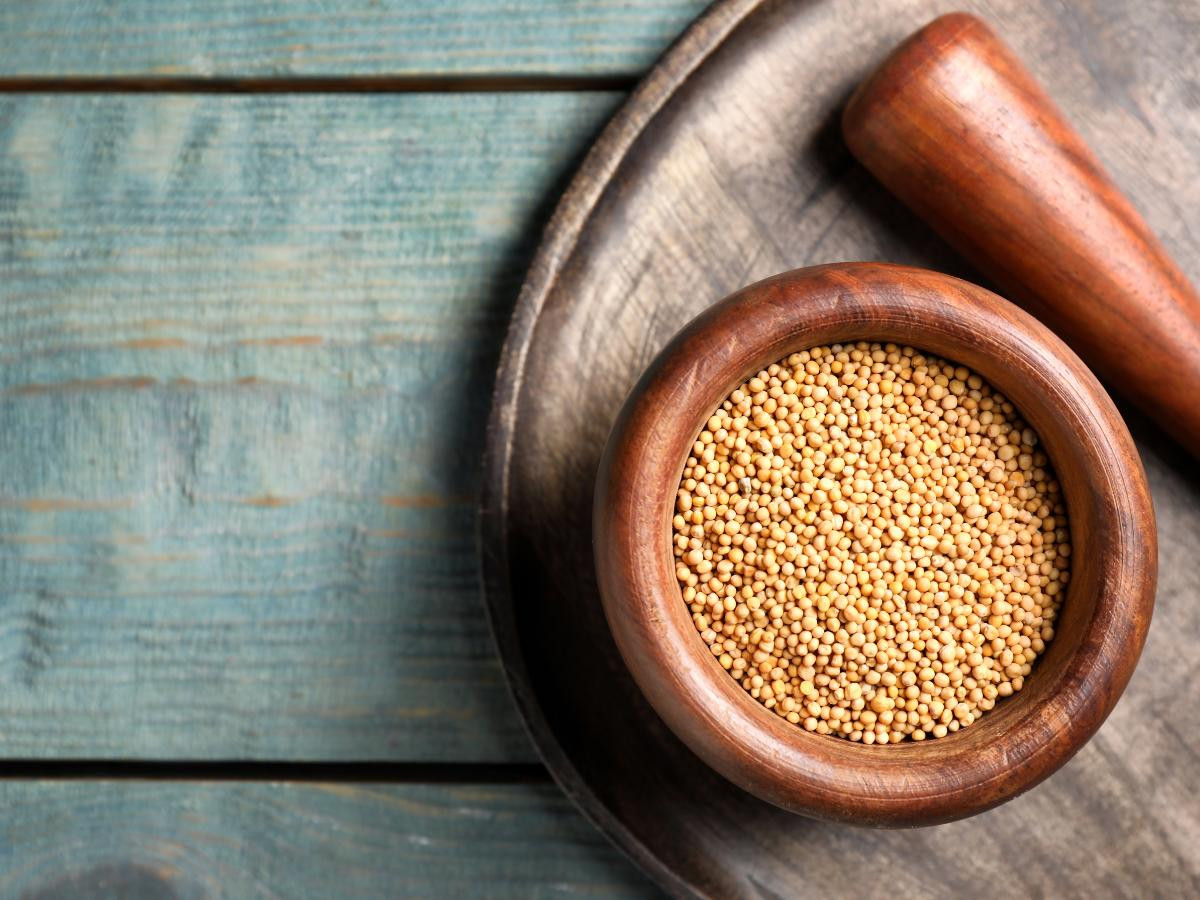
But why make your mustard? For starters, the freshness, quality and shelf life of homemade mustard are unparalleled. You control the ingredients, the flavor profiles, and the texture, tailoring it to your preference. Then there’s the undeniable pride and satisfaction in saying, “I made this!”
Imagine dazzling your friends at your next dinner party with a jar of your own homemade artisanal mustard – a surefire conversation starter and testament to your culinary skills.
And let’s not forget the sheer joy of indulgence. For those of us with a mustard craving, there’s nothing quite like slathering a cheese sandwich or hamburgers with a spicy spread you’ve crafted with your hands or adding a dollop of your homemade mustard to a favorite recipe, elevating it with a personal touch.
Table of Contents
What is the difference between mustard and stone-ground mustard?
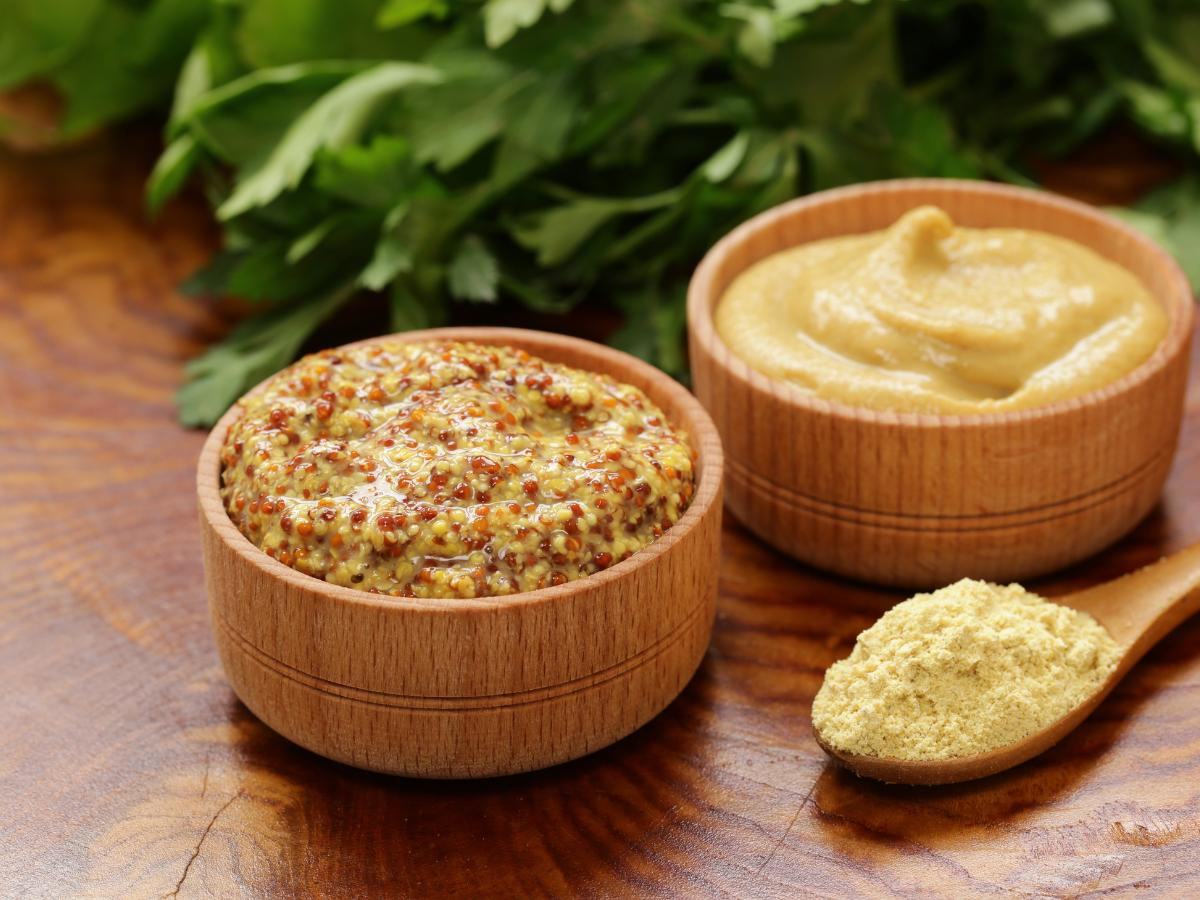
The difference between regular mustard and spicy stone ground mustard lies primarily in their preparation methods, texture, and flavor profiles
Preparation Method
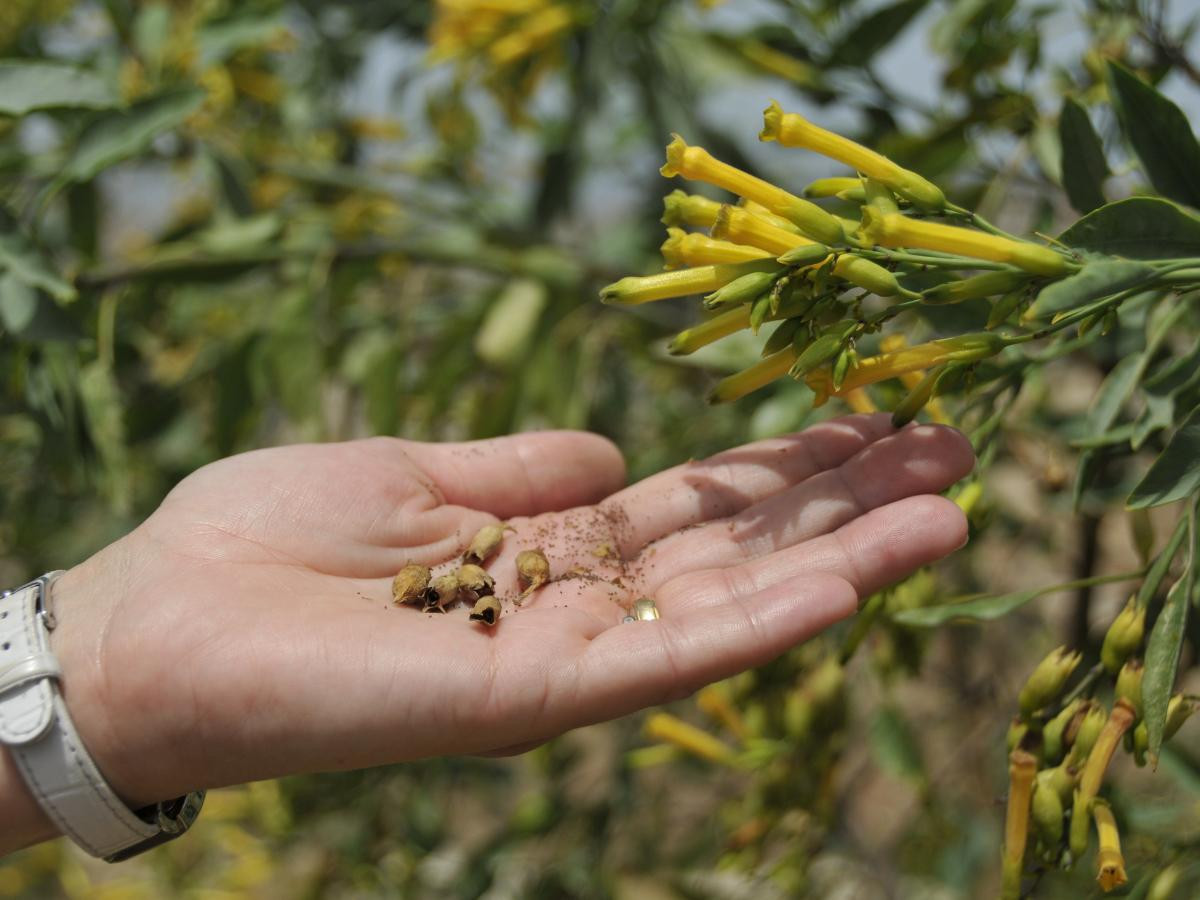
Regular Mustard typically refers to the smooth, uniformly blended mustard commonly found in stores. It’s usually made by finely grinding mustard seeds into a dry mustard powder and mixing them with liquids like water, vinegar, and various seasonings like turmeric or garlic powder. The seeds are ground using modern mechanical methods.
Stone Ground Mustard: As the name suggests, stone ground mustard is made by grinding whole mustard seeds with a stone mill. With not much additional prep time this traditional method of grinding helps retain some of the seeds’ texture. The process is gentler and retains more of the seeds’ natural characteristics.
Texture
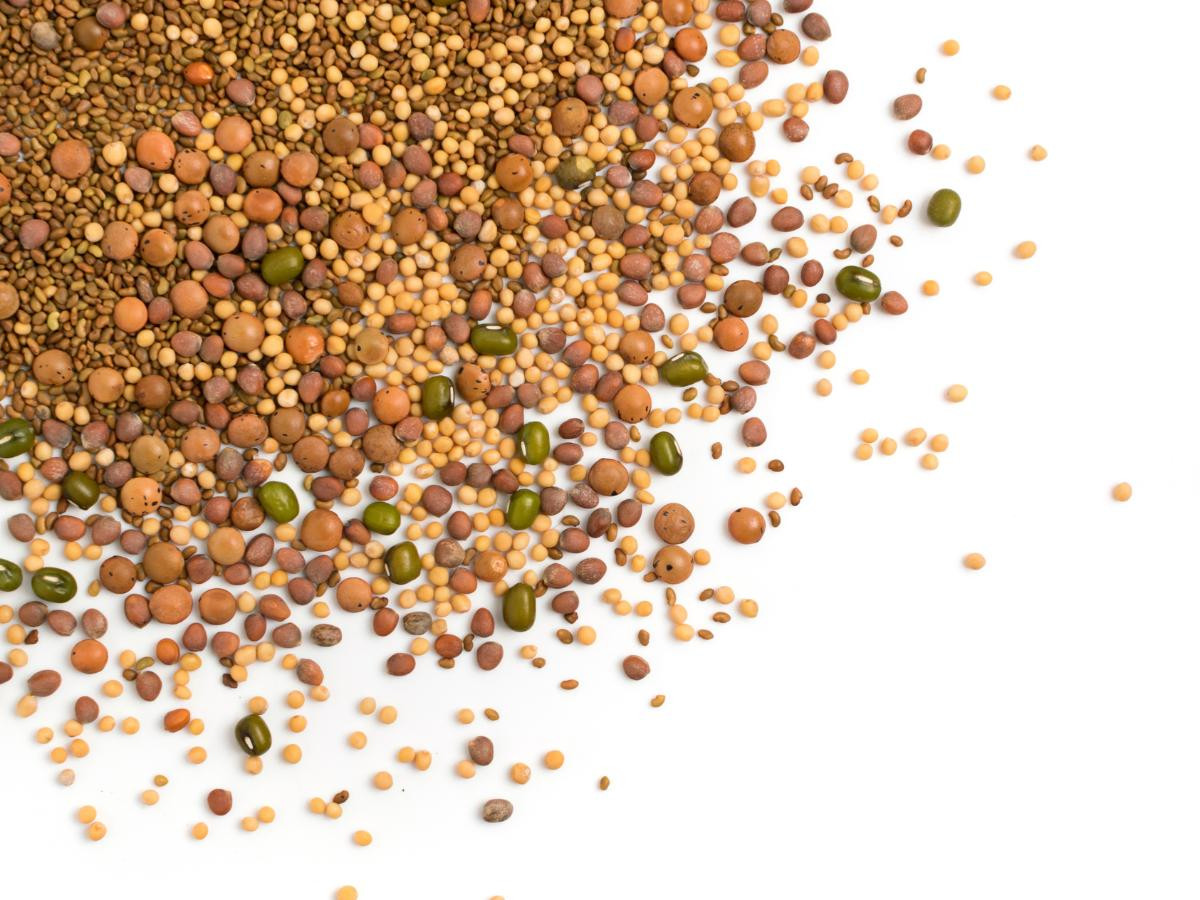
Regular Mustard: Often has a smooth, even consistency without noticeable seed fragments. Depending on the type and brand mixed with the dry mustard, it’s more homogenized and can range from very creamy to slightly gelatinous almost like ketchup or Mayo.
Stone Ground Mustard: Characterized by a coarser texture with visible, partially ground mustard seeds. This provides a more rustic and hearty mouthfeel, a distinctive feature of stone ground mustard.
Flavor
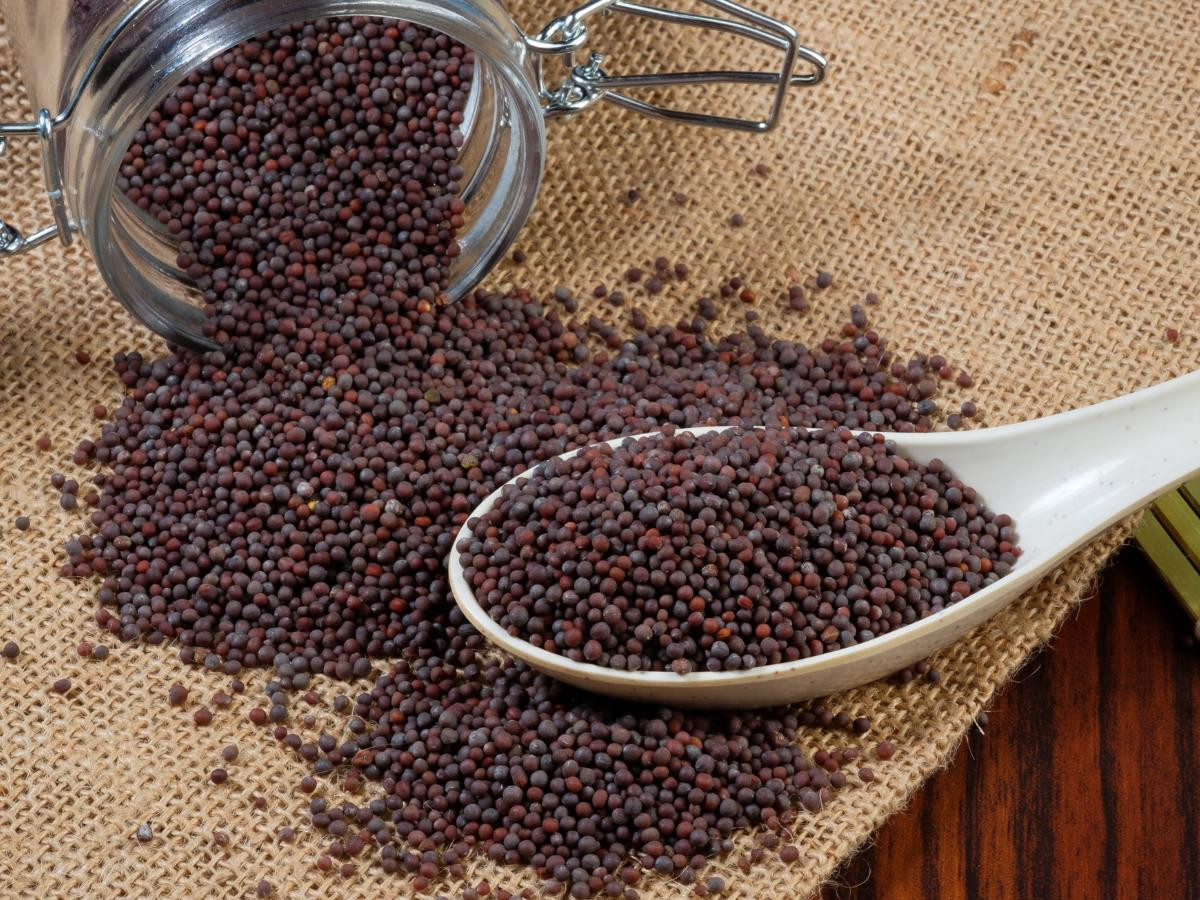
Regular Mustard: The flavor can vary widely, from mild to sharp, depending on the type of mustard seeds used and the blend of ingredients. However, the grinding process can sometimes reduce the potency of the seeds’ natural flavors.
Stone Ground Mustard: Tends to have a more robust and complex flavor profile. The gentle grinding process preserves more of the natural flavors of the mustard seeds, often resulting in a deeper, more nuanced taste. The texture also adds to the sensory experience.
Uses
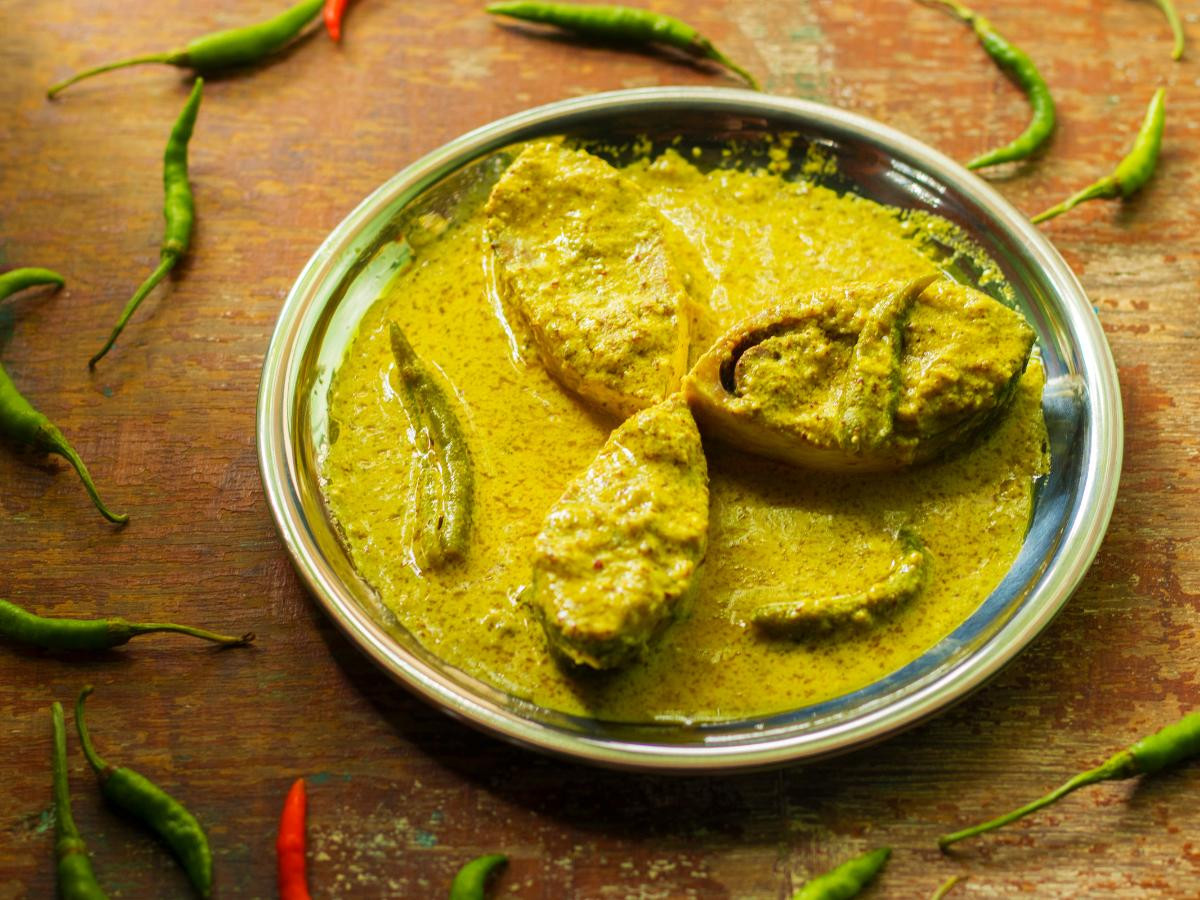
Regular Mustard: Due to its smooth texture from using dry mustard powder, it is versatile and often used as a spicy spread in dressings, marinades, and various culinary preparations where a smooth consistency is desired, like a barbecue sauce or yellow mustard on a Cuban sandwich.
Stone Ground Mustard: Its coarse, rustic texture makes it ideal for dishes where you want to add a bit of crunch and visual appeal. It’s often preferred in artisanal sandwiches, charcuterie boards, and as a condiment for meats and cheeses.
The main differences lie in the preparation method, resulting in distinct textures and flavor profiles. Stone ground mustard, combined with its traditional preparation and coarser texture, offers a more artisanal and robust taste experience compared to the smoother, more uniform regular mustard.
How To Make Mustard: Stone Ground Mustard Recipe
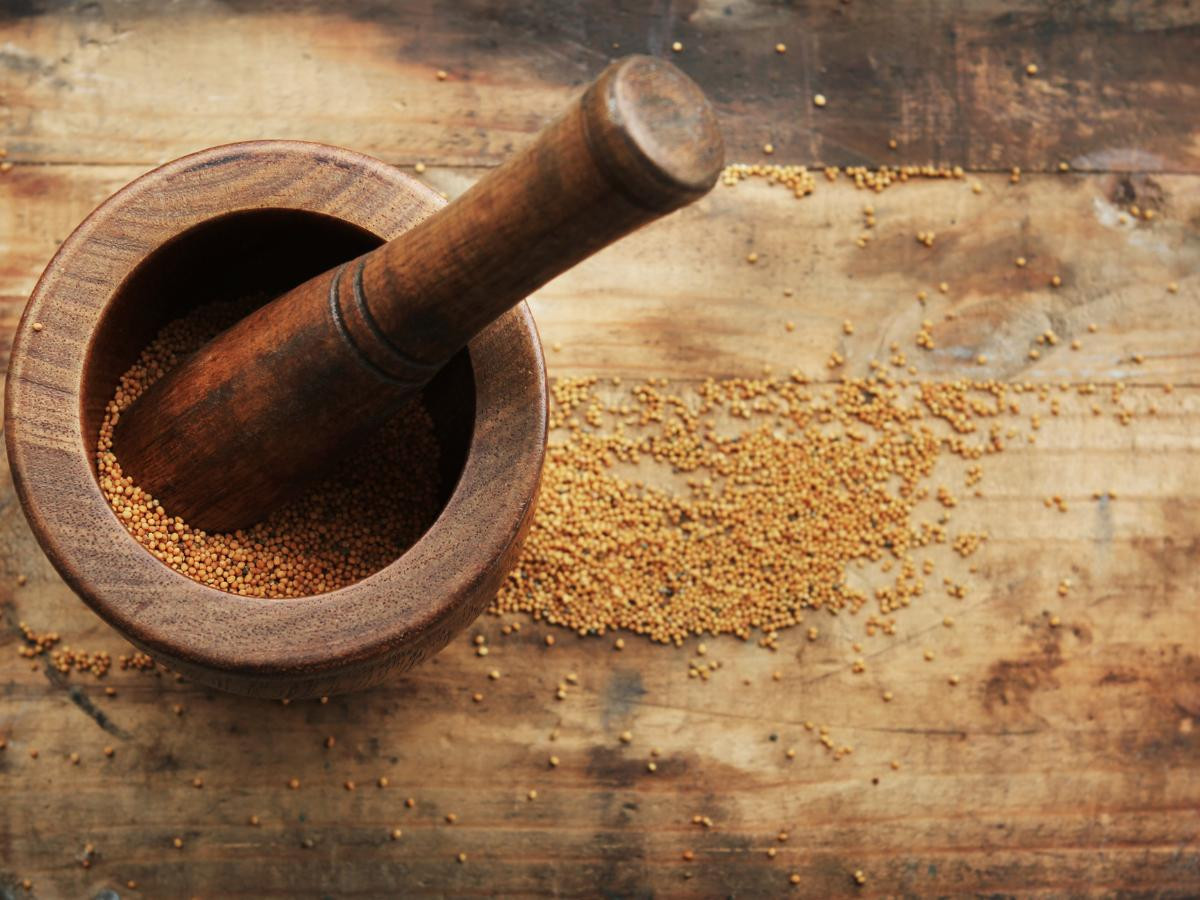
With its robust texture and deep flavors, this variety stands out in the mustard family, offering a rustic and gourmet experience that mass-produced mustards can’t match.
What You’ll Need
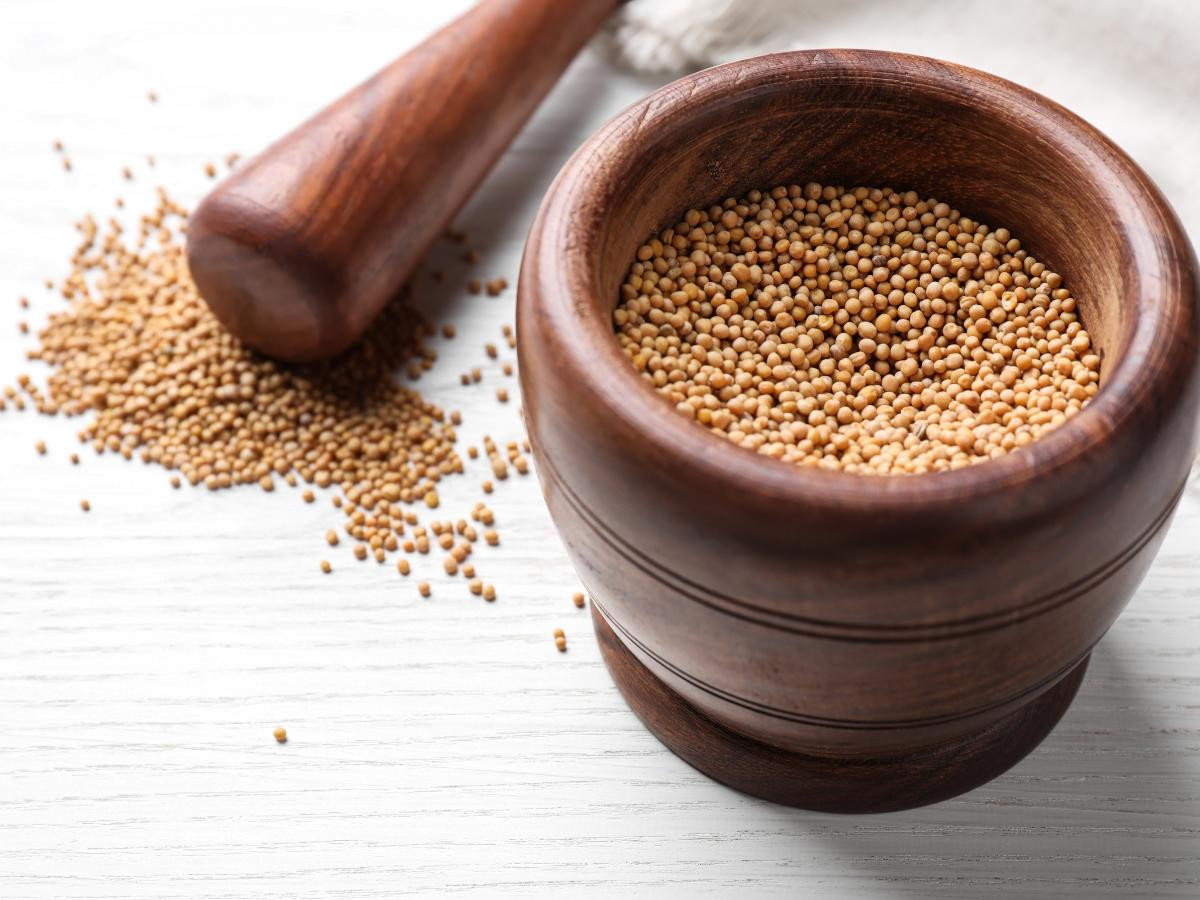
Ingredients
Whole mustard seeds (yellow, brown, or a mix) – 1 cup
Cold water – 1 cup
Vinegar (white wine or apple cider) – 3 tablespoons
Salt – 2 teaspoons
Optional: Honey, herbs, cayenne, garlic powder or spices for customization
Equipment
Mortar and pestle or a spice grinder
Mixing bowl
Jar for storage
The Process of Making Stone Ground Mustard
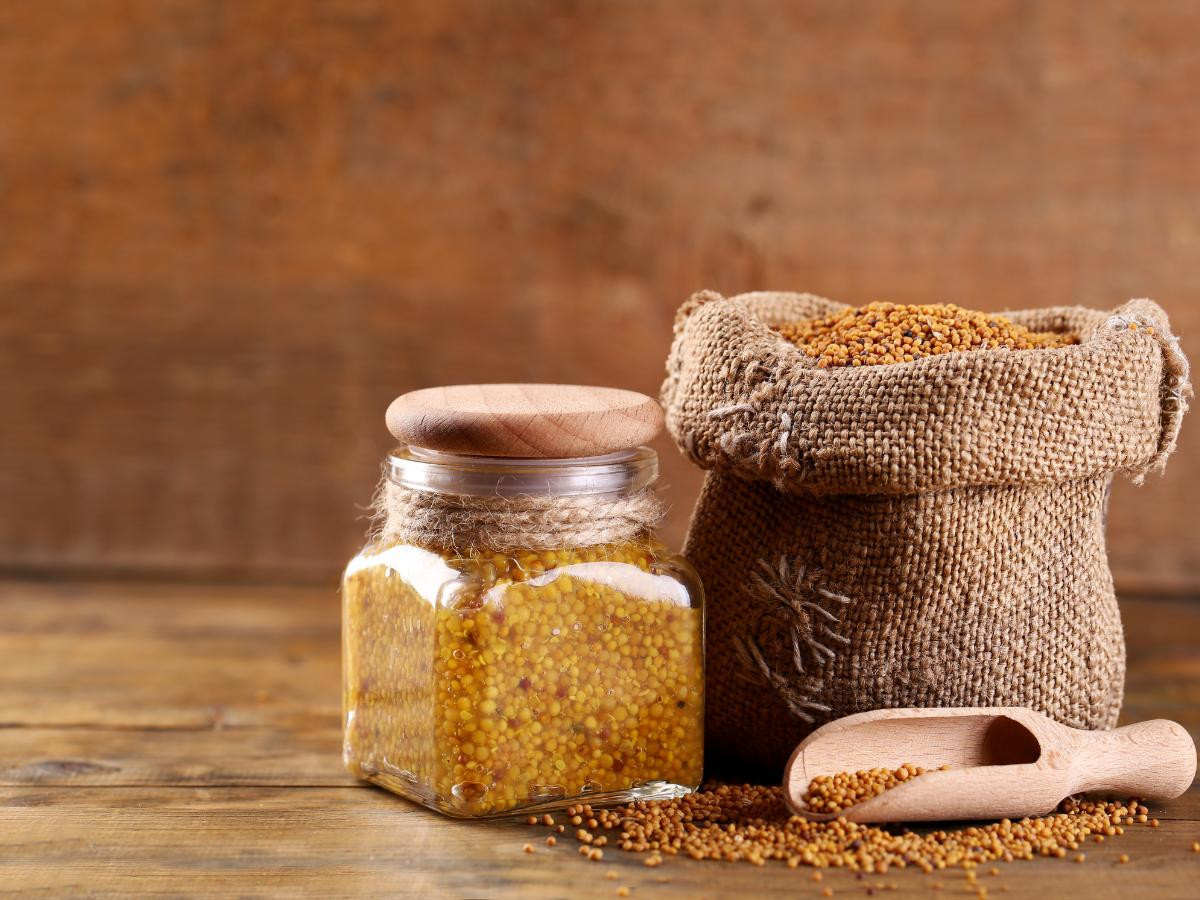
Soaking the Seeds: Start by soaking the mustard seeds overnight in cold water. This softens the seeds and unleashes their pungent flavors.
Grinding the Seeds: Grind the seeds to your preferred texture using a mortar and pestle. I adore the rustic, slightly coarse texture that releases bursts of flavor.
Mixing Ingredients: Combine the ground mustard with vinegar and salt in a bowl. Stir until you get a paste-like consistency. Here’s where you can get creative – add honey for sweetness or toss some herbs for an aromatic twist.
Texture: The beauty of stone ground mustard is in its texture. Grind it less for a heartier, grainier mustard or more for a smoother paste.
Flavor Customization
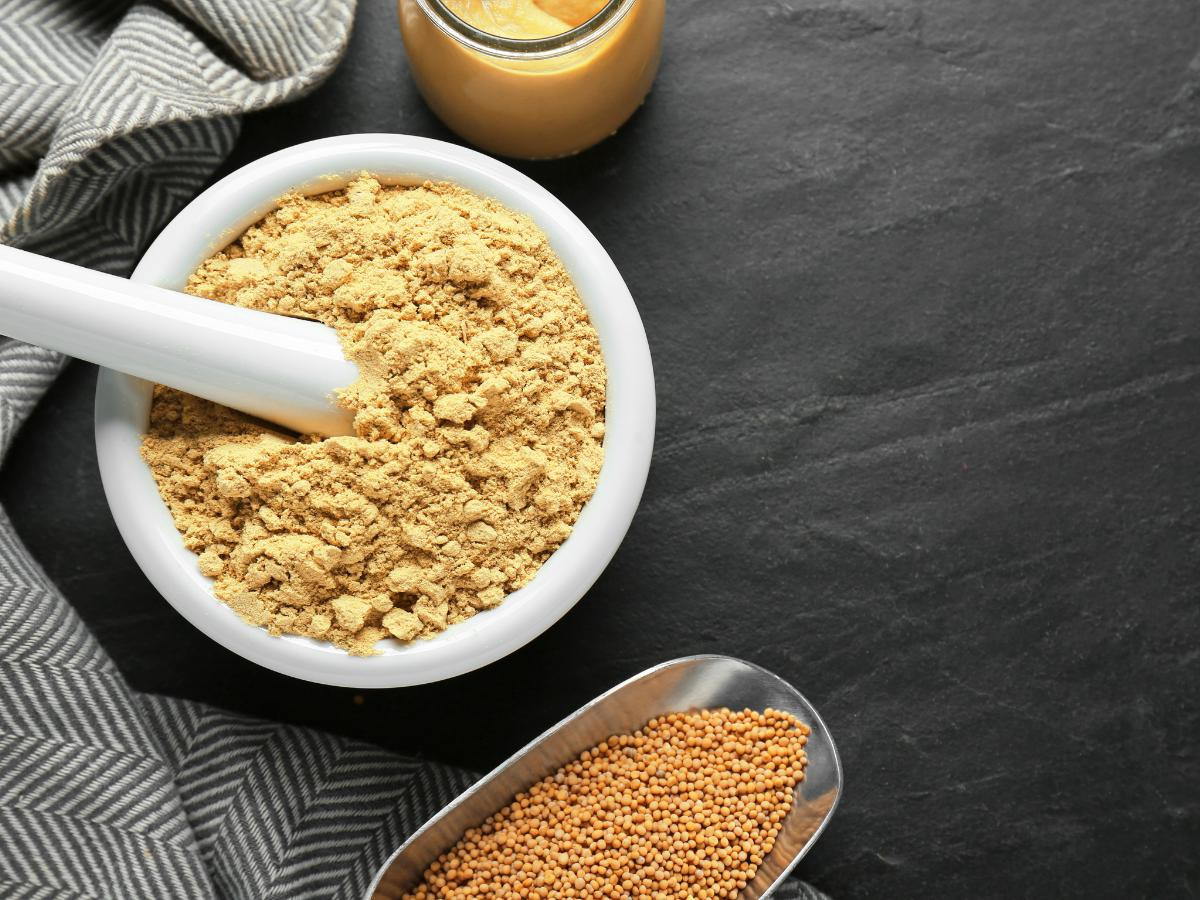
As a chef, I believe in making each dish uniquely yours. The same goes for mustard. Experiment with different vinegars – white wine vinegar for a classic tang or apple cider for a fruity note.
Feel free to add other flavors like parsley, thyme, garlic powder, or even a splash of beer!
Storage and Usage
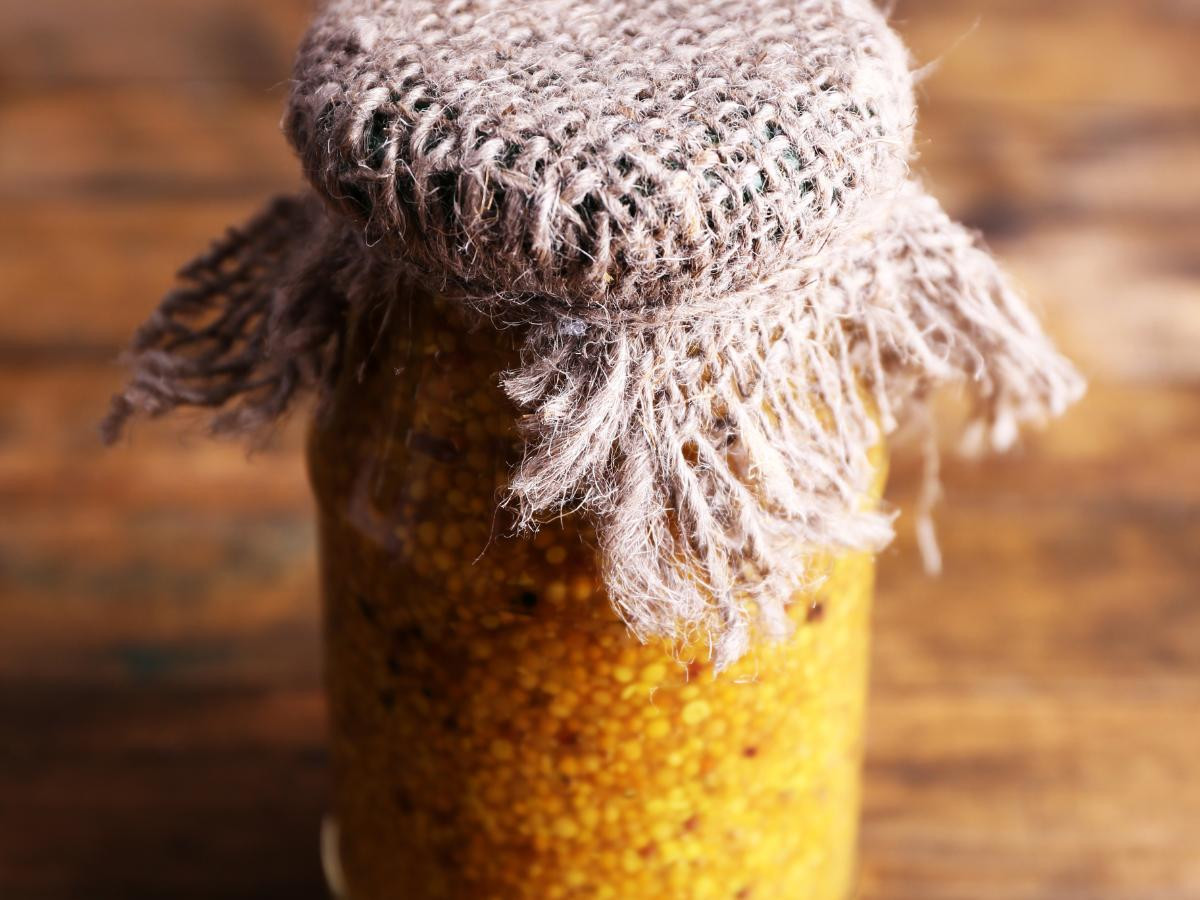
Stone ground mustard gets better with age. Store it in a sealed jar in the fridge, and it’ll mature beautifully for up to a month.
Use it as a glaze for meats, a lively addition to dressings, or slather it on a sandwich.
Conclusion
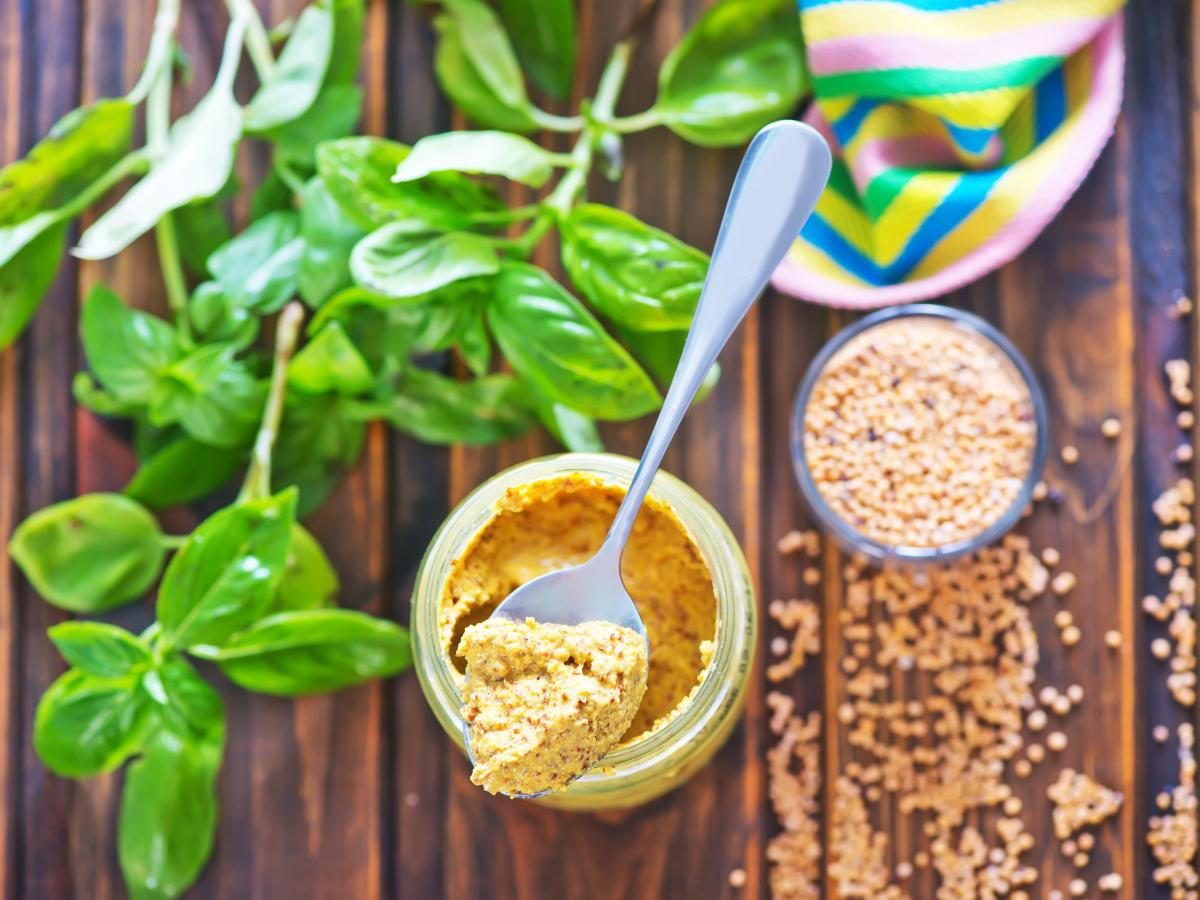
Creating your stone ground mustard is a simple yet fulfilling culinary adventure. It’s a testament to the beauty of artisanal food, where quality and personal touch reign supreme.
I encourage you to dive into this recipe, play with flavors like cayenne pepper, maybe a little Worcestershire sauce or brown sugar, and enjoy the journey of mustard making.
FAQ and Additional Information
What is a substitute for stone ground mustard?
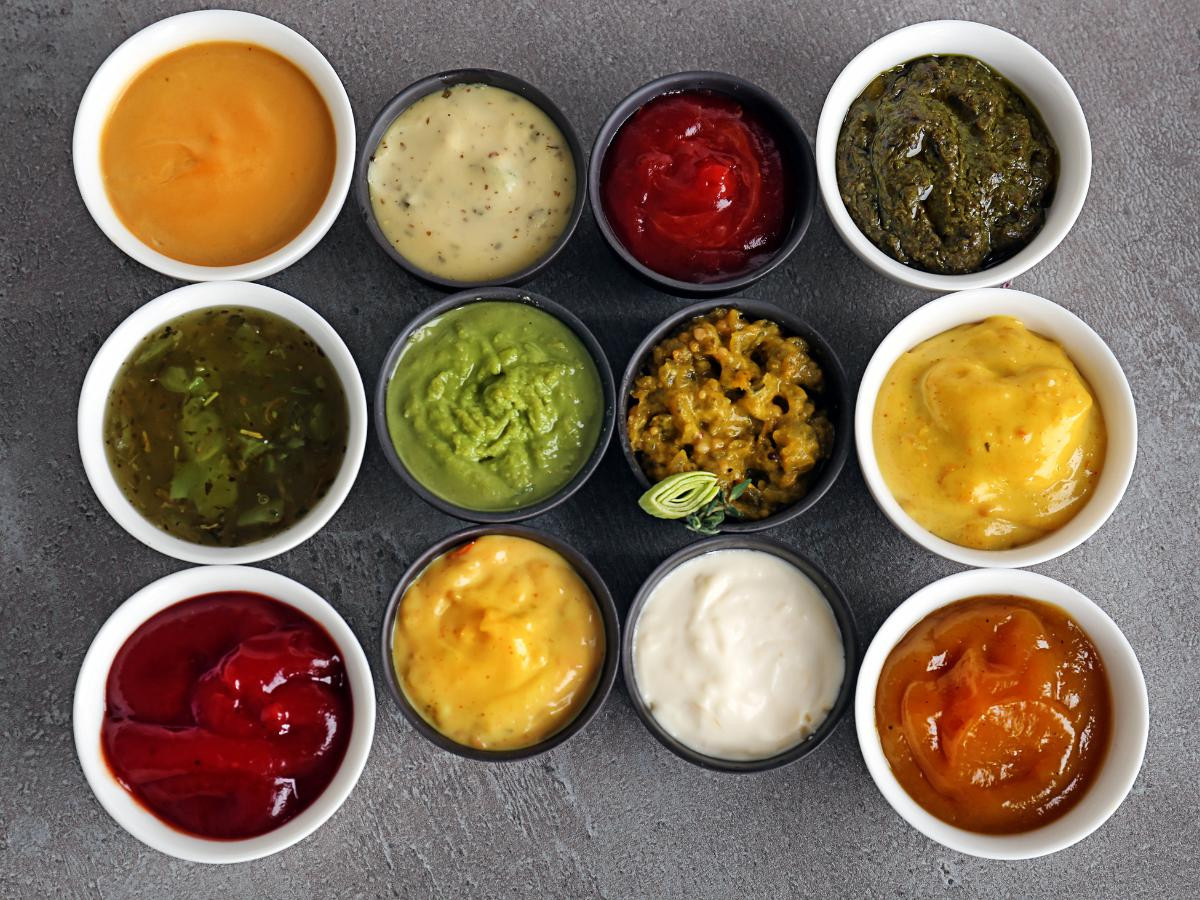
Dijon Mustard: This is a great alternative, especially in dressings and sauces, offering a similar tangy flavor.
Yellow Mustard: More mild and less complex, but can be used in a pinch, particularly in recipes where mustard isn’t the main flavor.
Whole Grain Mustard: Similar in texture to stone ground mustard, it can be an effective substitute in most recipes.
Horseradish or Wasabi (in small amounts): These can mimic the spicy quality of stone ground mustard, but be careful with the quantity due to their stronger flavors.
Honey Mustard: If your recipe can accommodate a bit of sweetness, honey mustard can be a good substitute.
Dry Mustard Powder: Mix it with water or vinegar to create a paste. This can work well in cooked dishes.
What can I do with ground mustard?
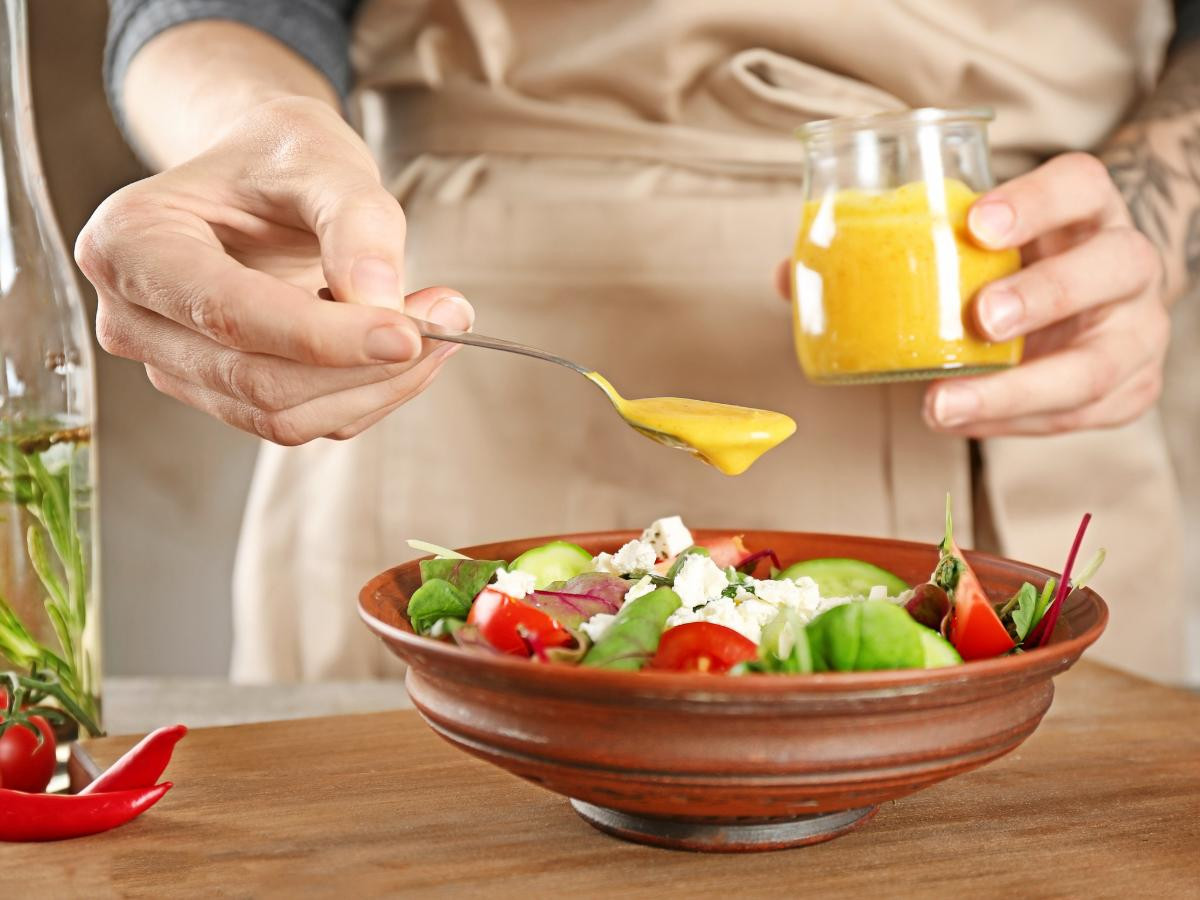
Ground or dry mustard powder is a versatile spice that can be used in various ways in the kitchen. Here are some ideas for using ground mustard:
1. Homemade Mustard: Add Dry mustard with water, vinegar, and your choice of flavorings (like honey, herbs, or spices) to make your own mustard.
2. Spice Rubs and Marinades: Add it to spice rubs for meats or mix into marinades to add a pungent, tangy flavor.
3. Salad Dressings: Whisk ground mustard into vinaigrettes and salad dressings for an emulsifying effect and a flavor boost.
4. Sauces and Gravies: Stir it into sauces and gravies for added depth and tanginess. It’s especially good in creamy sauces , cheese sauces or just a honey mustard dip for your chicken nuggets and french fries..
5. Pickling: Include ground mustard in pickling brines for vegetables for an extra kick of flavor.
6. Baking: Incorporate it into bread doughs, particularly in recipes for savory baked goods.
7. Soups and Stews: A small amount can enhance the flavor profile of soups and stews.
8. Macaroni and Cheese: Add a pinch to your cheese sauce for a more complex flavor.
9. Glazes: Combine with honey or brown sugar to create ham, pork, or chicken glazes.
10. Deviled Eggs: Mix into the filling for deviled eggs for a traditional mustard flavor.
11. Roasted Vegetables: Sprinkle over vegetables before roasting to add a unique flavor.
12. Bloody Marys: A small amount can spice up your Bloody Mary mix.
Ground dry mustard is potent, so a little goes a long way. You should start with a small amount and adjust to taste.
Can I use just one type of mustard seed or Dry Mustard?
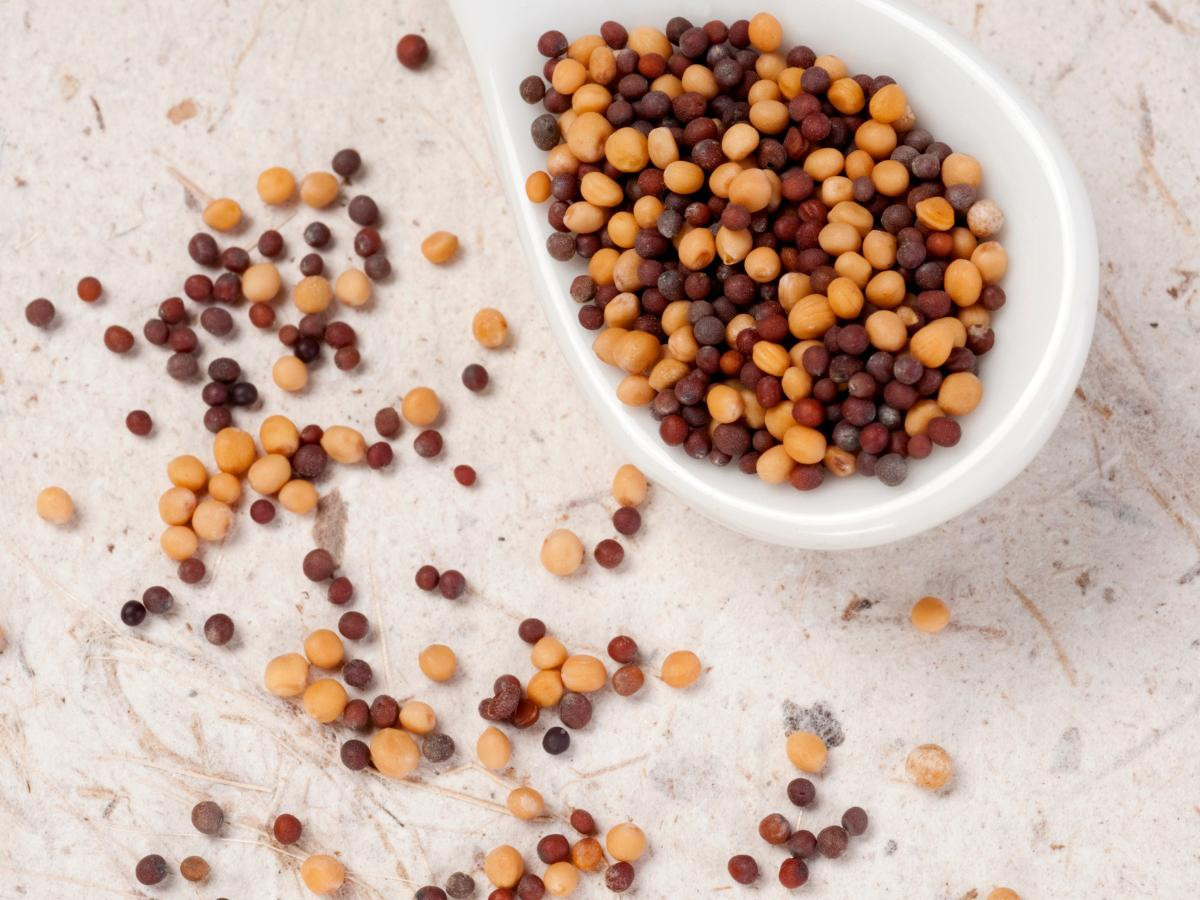
Absolutely! Yellow mustard seeds are milder, while brown or black seeds pack more heat. Yellow Mustard seeds will give you a milder flavor and more of a yellow mustard pigment.
What if my mustard is too thick?
Just add a bit more water or vinegar to reach your desired consistency.
What is The Best Way To Grind Mustard Seeds: Brown Mustard Seeds To Mustard Powder
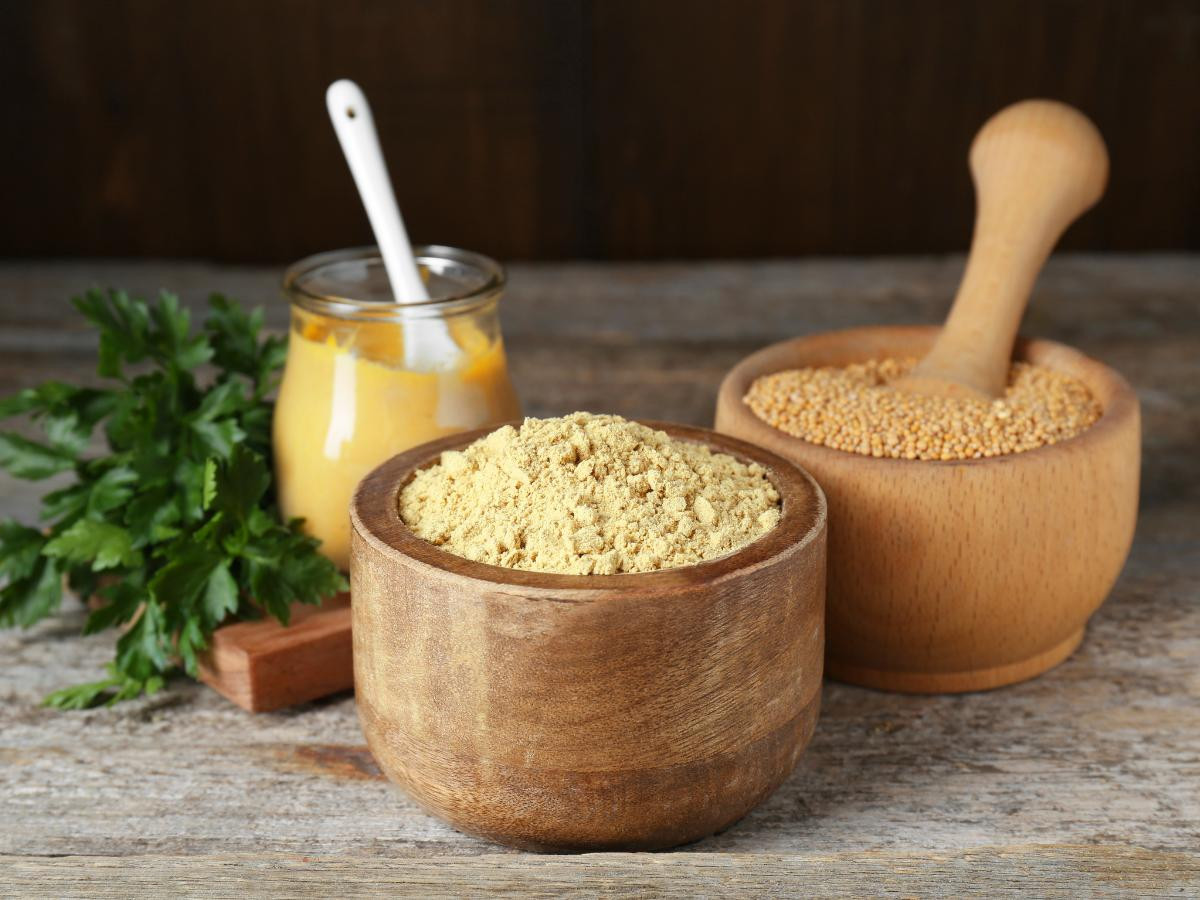
Turning brown mustard seeds into mustard powder involves a process of drying and grinding. Here’s an optimal technique to achieve a fine, consistent mustard powder:
Drying the Mustard Seeds:
Ensure your brown mustard seeds are completely dry before grinding. If you’ve just purchased them or if they seem moist, you can dry them by spreading them out in a thin layer on a baking sheet.
Place the baking sheet in a cool, dry place, or under the sun for natural drying. You can also put them in a low-temperature oven (around 50°C or 120°F) for a short period. Be careful not to heat them too much, which can alter their flavor.
Choosing the Right Grinder:
A spice or coffee grinder dedicated to spices is ideal for grinding mustard seeds. These appliances are designed to handle small, hard items like seeds and produce a fine powder.
Alternatively, a high-powered blender can also be effective, especially if you’re grinding a larger quantity of seeds.
Grinding the Seeds:
Fill your grinder about halfway with mustard seeds. Overfilling can lead to uneven grinding.
Pulse the grinder or food processor in short bursts. Grinding continuously can heat the seeds, possibly affecting the flavor. Pulsing allows the seeds to settle and grind evenly.
After several pulses, check the consistency of the powder. For a finer powder, continue pulsing until you reach the desired fineness.
Sifting the Powder:
Once ground, sift the mustard powder through a fine mesh sieve. This helps remove any larger, unground pieces and ensures a uniform texture.
The coarse bits left in the sieve can be ground again for maximum yield.
Storing the Mustard Powder:
Store the mustard powder in an airtight container, away from direct sunlight and heat. This helps preserve its potency and flavor.
The powder can lose its potency over time, so it’s best used within a few months.
Tips for Best Results:
Clean your grinder thoroughly before and after use to prevent flavor transfer, especially if using a coffee grinder.
If you’re planning to use the mustard powder for cooking immediately, you might opt for a coarser grind, which can add a textural element to dishes.
Following these steps, you can turn brown mustard seeds into a fine, aromatic mustard powder, perfect for culinary uses.

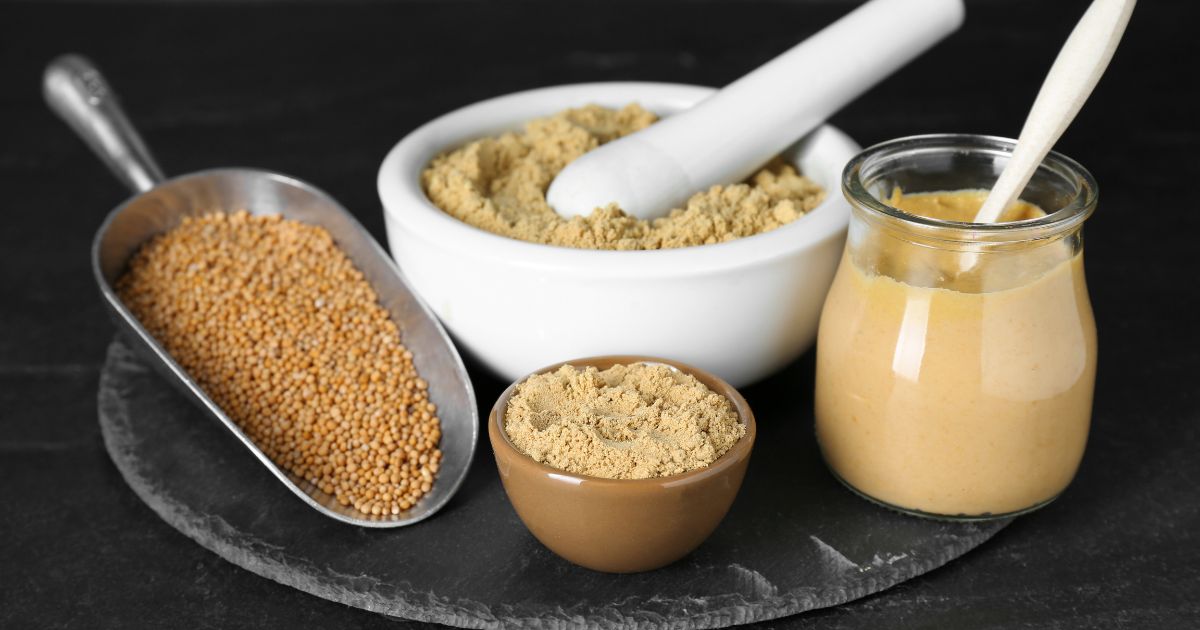
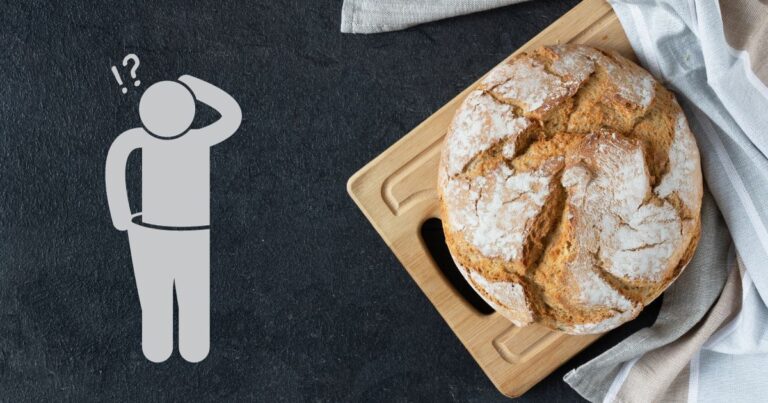
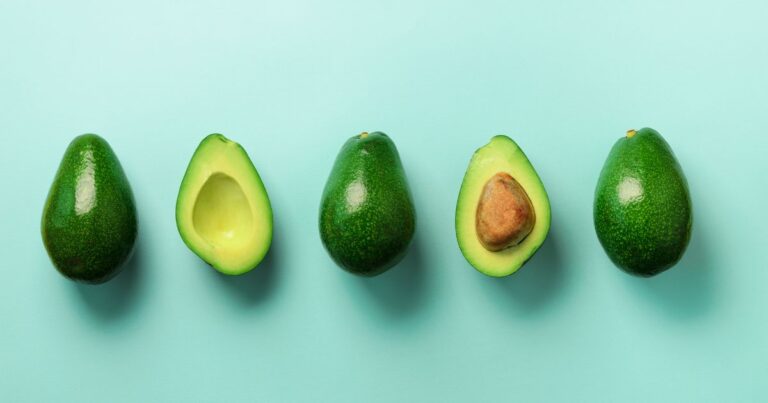
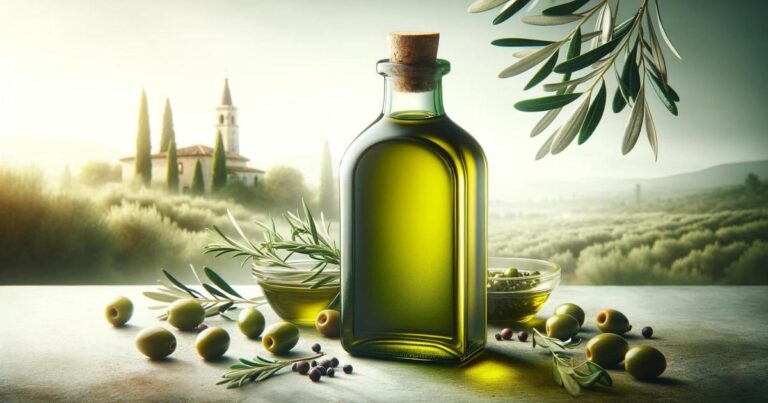
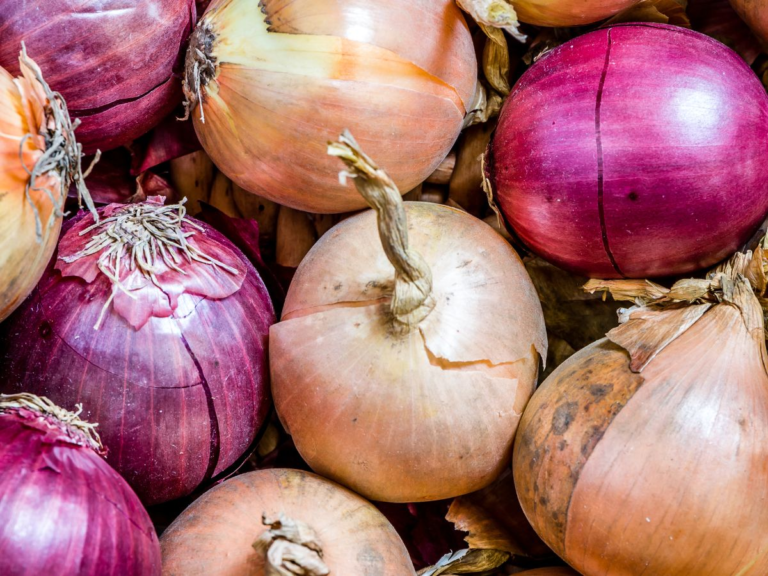

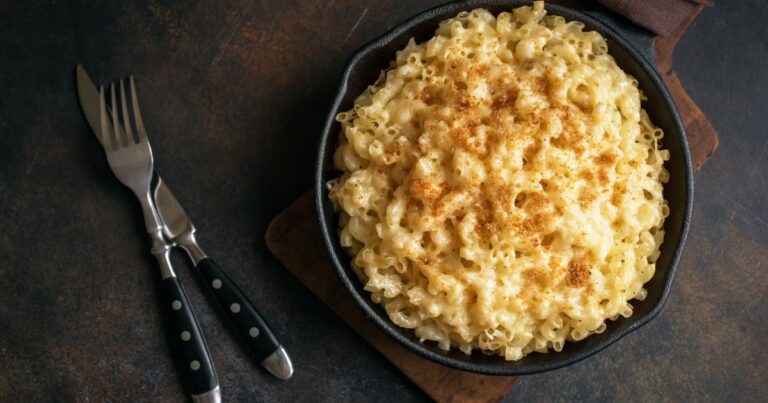
One Comment